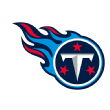With free agency mostly over, the next stop on the professional football calendar is in Philadelphia for the NFL draft on April 27. It's still possible we might see a trade or two in advance of the draft, but there's not the same sort of late-March chatter we heard last year, when the Titans and Browns dealt out of the first and second picks of the draft, respectively. Barring a major trade, we should have a solid sense of how much draft capital each team has to work with for the upcoming season.
It won't surprise you to hear that the Rams have the least draft capital after trading away what became the fifth overall pick as part of last year's Jared Goff deal, but quantifying the differences between teams and identifying the changes they've made is important. For all the talk of teams spending money in free agency and trading up for stars, this is our chance to see how the teams who have been more conservative benefit from compensatory picks and future selections.
To measure each team's draft capital, I'll be using the empirical draft chart generated by Chase Stuart of Football Perspective. Unlike the traditional chart, which begins with a value of 3,000 points and falls all the way down to two points, Stuart's chart finds a much smaller gap between picks. The top pick by Stuart's model is worth 34.6 points, while the 224th pick is worth 0.1 points. (Both models award zero points to picks after the 224th selection.)
There will be a table with each team's overall draft capital at the end of the piece, but let's first look at how each organization's assets have shifted from the original picks they were awarded. Each team has a baseline value of picks that they would have been granted by the league as a result of where they finished in 2016, ranging from the Browns (67.4 points of value) to the Patriots (33.3 points).
From there, I split up the 89.9 points of value that comes with the league's 32 compensatory picks among all 32 teams, giving each team 2.8 additional points of value before adjusting their original picks accordingly. The first pick of the fourth round in a league with no compensatory picks would be the 97th selection and worth 5.5 points to the Browns; instead, after teams were awarded 11 compensatory selections at the end of the third round, that same pick was suddenly the 108th choice and worth only 4.8 points.
Finally, I took out the selections that were voided by the league for various punishments and accounted for all the trades and actually awarded compensatory picks. As a result, we can all gain a sense of who has added -- or lost -- the most in terms of draft assets versus the picks they would have inherited based solely upon their 2016 finish.
Teams that have lost the most draft capital

28. Miami Dolphins
Original adjusted capital: 41.9 points
Actual capital: 34.8 points (minus-17.0 percent)
It might be a surprise to see the Dolphins here, given that they have the best possible compensatory pick (the 33rd pick in the third round, pick No. 97), as well as a pair of fifth-round compensatory selections, thanks to the departures of Olivier Vernon, Lamar Miller and Kelvin Sheppard. Those picks are worth a combined 8.5 points of draft capital, and if the Dolphins had held onto the remainder of their picks, they would be in great shape for this year's draft.
That's not what happened. Miami still has its first- and second-round picks, but the Dolphins sent their third- and fourth-round selections to Minnesota last year to trade up and grab wideout Leonte Carroo, who is blocked from meaningful reps by the presence of Jarvis Landry, DeVante Parker and Kenny Stills. The Dolphins traded their sixth-rounder to the Rams in what was actually a nifty low-cost move to get a seventh-rounder and William Hayes, and they sent a seventh-rounder to the Jaguars in the hopes of buying low on Julius Thomas. Those moves are far more defensible than the Carroo trade, but the missing picks are enough to blight Miami's assets.

29. Dallas Cowboys
Original adjusted capital: 38.4 points
Actual capital: 31.7 points (minus-17.5 percent)
The Cowboys are plenty happy with their situation after finding Dak Prescott in the fourth round of last year's draft. They'll feel the effects of their previous attempt to find a replacement for the injured Tony Romo this year, though, having dealt their 2017 fifth-round pick to the Bills for a 2017 seventh-rounder and Matt Cassel in a trade that seems like it took place decades ago. The Cowboys are also one of the 16 teams in the NFL to not be awarded a compensatory pick from last year's offseason activity, which accounts for the remainder of their drop-off.

30. Minnesota Vikings
Original adjusted capital: 47.4 points
Actual capital: 33.9 points (minus-28.5 percent)
The Vikings are in line to benefit from that Carroo trade with the Dolphins, but Minnesota is missing its most valuable draft asset after trading its first-round pick to the Eagles for Sam Bradford. I wrote about the Bradford trade back in November, and while Bradford played as well (if not better) than anyone could have expected given a porous offensive line in Minnesota, the Vikings should probably look back and regret missing out on their first-rounder, given that the trade was designed to keep open the window of a player (Adrian Peterson) who missed virtually the entire year anyway. The Vikes also will send a 2018 fourth-rounder Philly's way to complete the deal.

31. New England Patriots
Original adjusted capital: 36.1 points
Actual capital: 21.0 points (minus-41.8 percent)
The Patriots have less than half as much capital as the average team (44.8 points), given that they hold just one of their seven original draft picks, the 96th selection. The Pats have acquired five choices and several players with a series of swaps, the most notable of which is the deal for Brandin Cooks. The Saints nabbed 12.8 points of draft capital as part of the trade sending Cooks to the Patriots, shipping the 107th selection to New England, while acquiring the 32nd and 103rd picks. That 107th pick was sacrificed to the league as the final punishment for the Deflategate scandal.
Bill Belichick & Co. also moved down seven spots by sending their second-rounder to Carolina for the Panthers' third-rounder and Kony Ealy and dropping their fourth-rounder to a sixth-rounder to acquire Dwayne Allen. They sent a fifth-round pick to Cleveland for Barkevious Mingo and a sixth-rounder to Detroit for a seventh-rounder and Kyle Van Noy. Finally, the Pats were able to grab a fourth-rounder from Seattle as part of a trade up from last year's draft, as well as picks in the fifth round from the Broncos (for A.J. Derby) and the seventh round from the Lions (for Michael Williams). Got all that?

32. Los Angeles Rams
Original adjusted capital: 58.1 points
Actual capital: 31.5 points (minus-45.8 percent)
The Patriots picked up a star wide receiver after winning the Super Bowl, so I suspect they're not too upset about those missing draft assets. The Rams traded up with the Titans for a quarterback who had one of the worst rookie half-seasons in recent memory, so they might not be feeling quite as sanguine. New head coach Sean McVay will be short the fifth overall selection and the 100th pick in this year's draft as part of the trade with the Titans.
The Rams did get a fourth-rounder for Rodney McLeod and moved up into the sixth round by sending their seventh-rounder and William Hayes to Miami, but the Titans own a huge chunk of Los Angeles' original draft capital. The Rams will be feeling its absence even if Goff works out, but if he doesn't ...
Teams that have added the most draft capital

5. Pittsburgh Steelers
Original adjusted capital: 37.3 points
Actual capital: 37.6 points (plus-0.8 percent)
Twenty-three of the league's 32 teams have less to work with in terms of draft capital than they would have without any trades, and there isn't much of a difference between teams ranked No. 5 through No. 9 in actual capital increase. They've each improved their lot by a tiny amount, between zero and 1 percent.
It's convenient that the Steelers are here in fifth, though, because they picked up a third-round compensatory pick, the 105th selection, when they weren't expected to get anything higher than a fifth-round selection. The reason why is Kelvin Beachum, who signed a five-year, $45 million deal with the Jaguars, which was really a one-year, $5.4 million deal with a four-year team option tacked onto the end. Jacksonville ended up declining the option, but for the purposes of the compensatory pool, the Steelers were credited for the total value of the deal (and its $9 million-per-year average), as opposed to the value of the one-year option at $5.4 million. That's why they picked up a third-round pick, as opposed to a fifth-rounder.
The Seahawks reaped the same benefit when the Broncos signed Russell Okung under the same sort of option structure, helping to push an additional third-round pick their way. Organizations who are losing free agents can't really exploit this all that much, because there really isn't a way to induce other teams to hand out contracts like this, but teams that are trying to maximize their compensatory pick chances are less likely to hand out these sort of one-plus deals in the future.

4. Kansas City Chiefs
Original adjusted capital: 39.0 points
Actual capital: 40.7 points (plus-4.3 percent)
This is even with the Chiefs missing a sixth-round pick as part of their punishment for tampering with Jeremy Maclin before the 2015 offseason, which cost them 1.3 points of capital. The Chiefs haven't acquired anybody else's picks, but they have four compensatory selections, including a third-rounder, a fifth-rounder and two sixth-round picks. The players behind those comp picks had star-crossed seasons. Sean Smith was benched by the Raiders at points last year. Chase Daniel already has been released by the Eagles. Donald Stephenson also was benched at times by the Broncos and forced to take a pay cut. And of this while Tyvon Branch spent most of the year on injured reserve.

3. New Orleans Saints
Original adjusted capital: 50.5 points
Actual capital: 55.7 points (plus-10.3 percent)
The Saints generated no compensatory picks and already dealt their fifth-round pick to the Redskins to move up and grab David Onyemata last season, so their increase in draft capital came at the cost of Brandin Cooks.
Mickey Loomis also tried to amass draft picks in an attempt to flood a top-heavy, cap-strapped Saints team with cheap talent in 2015, but it didn't work out. No. 13 overall pick Andrus Peat, a left tackle at Stanford, has settled in at guard. Fellow first-rounder Stephone Anthony, acquired in the Jimmy Graham trade, was essentially pushed out of the defense last year in favor of Craig Robertson and only played 12.7 percent of the defensive snaps. Second-rounder Hau'oli Kikaha, who tore his ACL twice in college, suffered the same injury and missed all of 2016. And third-round pick Garrett Grayson, drafted as a possible long-term replacement for Drew Brees, was cut after one year. (The Saints did re-sign him when he went unclaimed through waivers.)
New Orleans will hope for better luck this year, but they might end up sending one of those picks back to New England if they consummate their oft-rumored interest in signing restricted free agent Malcolm Butler to an offer sheet. The Saints would owe the 11th overall pick if the Patriots declined to match their offer, which is worth 19.3 points of capital on its own. They would likely prefer the Pats to take their 32nd pick back, which is only worth 12.5 points, but coach Bill Belichick is no fool. They're refusing to talk any trade terms until Butler signs his tender, which would set the baseline for compensation as that 11th pick.

2. Tennessee Titans
Original adjusted capital: 44.3 points
Actual capital: 58.7 points (plus-32.5 percent)
The Jared Goff trade looks mighty fine for Tennessee at this point. They'll enjoy the fifth and 100th overall selections in this draft courtesy of the Rams. Their second-round pick (52) is off to the Browns as part of last year's trade up for Jack Conklin, and a pair of trades has Tennessee moving down 11 spots in the sixth round, but general manager Jon Robinson is not going to complain. His team is well-positioned to take advantage of this draft.
It will be interesting to see if Robinson emulates his former boss in dealing from a position of strength. Belichick trades down as much as anybody in football (and to his benefit), and he picked up a first-rounder that became the seventh overall pick as part of a deal with the 49ers in 2007. Belichick could have held onto the pick, but he continued to trade down, grabbing Jerod Mayo with the 10th selection, while using a fourth-rounder he acquired in the 49ers deal to grab ... Randy Moss.

1. Cleveland Browns
Original adjusted capital: 70.2 points
Actual capital: 96.7 points (plus-37.7 percent)
The Browns naturally would have had the most capital of any team in the league by virtue of holding the first overall pick, but they're way ahead of the pack after trades and compensatory selections. The Browns have the Eagles' first-round pick (the 12th selection), the Titans' just-mentioned second-rounder, a fifth-rounder from the Patriots and a sixth-rounder from the Texans to go with a fifth-round compensatory selection. They have all their original selections, short a seventh-rounder, which was sent to the 49ers for Andy Lee two years ago.
The Browns have 96.7 points to work with in this year's draft; the 49ers, in second, are at 65.0 points. San Francisco is closer to Minnesota, which ranks 28th in draft capital, than it is to Cleveland. Even more staggeringly, this fails to consider what the Browns have done to ensure that they're also set up for 2018. They already have three second-round picks in next year's draft, with selections coming from the Eagles (in the Carson Wentz trade) and Texans (the Brock Osweiler salary dump), as well as extra picks in the fourth round (from when they traded Lee to Carolina) and sixth round (from Pittsburgh for Justin Gilbert).
They also sent a third-round comp pick to the Patriots for Jamie Collins, whom the Browns expect to become a cornerstone of their defense. I wouldn't expect the Browns to hold on to all of their picks this year; they'll likely move around in the draft and continue to try to trade for future selections, although they might not be willing to risk the public-relations hit of passing on Myles Garrett with the first overall pick.
Of course, naysayers will point out that the Browns need to hit on their picks to justify their aggressiveness in acquiring extra picks, and it's true: If the Browns do a terrible job of drafting and developing talent, their strategy will fail. It's also true that the Browns will fail if they repeatedly trade up and spend a ton of money on free agents and do a poor job of developing those players, as well. There's no foolproof strategy, but history tells us what the Browns are doing is the most prudent option. They're maxing out their 401k and piling money into their savings, instead of playing the lottery. Sure, the stock market might crash, but the Browns are banking on the long-term play winning out in the end.
